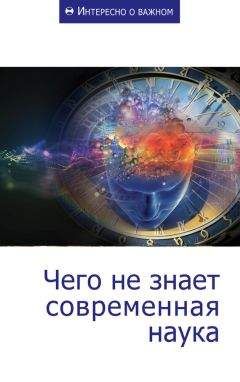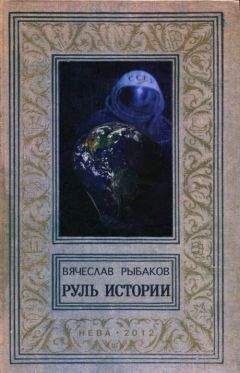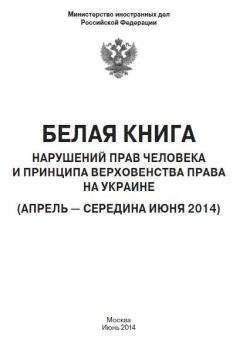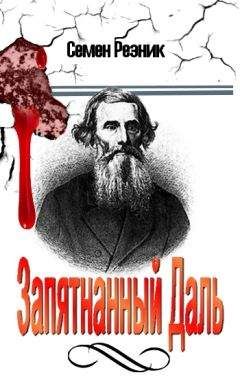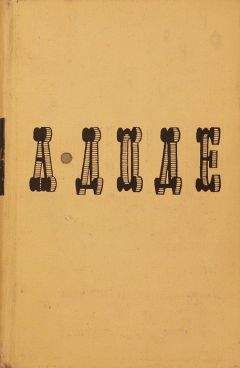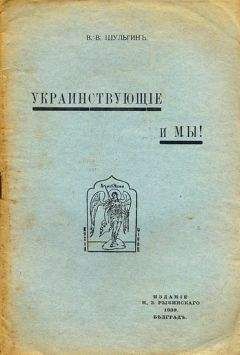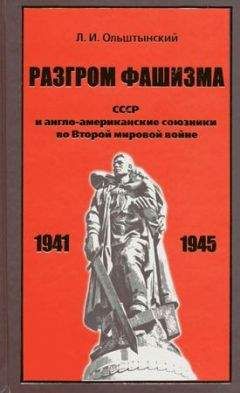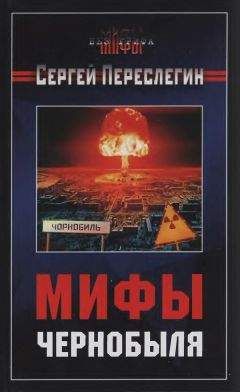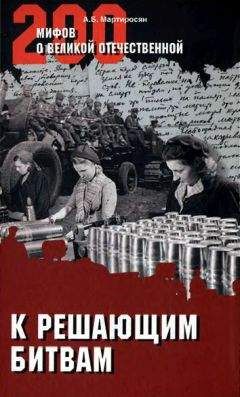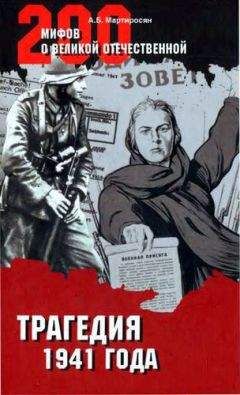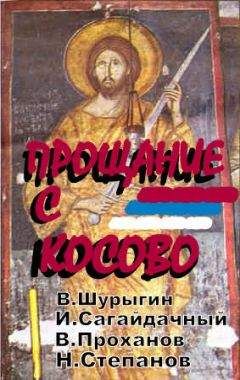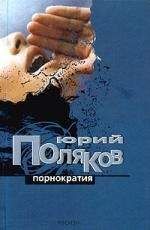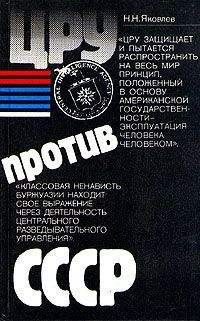Пер Рудлинг - ОУН и УПА: исследования о создании "исторических " мифов. Сборник статей

Скачивание начинается... Если скачивание не началось автоматически, пожалуйста нажмите на эту ссылку.
Жалоба
Напишите нам, и мы в срочном порядке примем меры.
Описание книги "ОУН и УПА: исследования о создании "исторических " мифов. Сборник статей"
Описание и краткое содержание "ОУН и УПА: исследования о создании "исторических " мифов. Сборник статей" читать бесплатно онлайн.
Сборник статей «ОУН и УПА: исследования о создании «исторических» мифов» является вторым изданием в серии «Историческая правда», основанной Международным антифашистским фронтом в 2011 году.
В издании представлены исследования современных западных ученых — Пера Андерса Рудлинга, Тимоти Д. Шнайдера, Гжегожа Россолинского-Либе на тему украинского радикального национализма, фашизма, создания антиисторических мифов вокруг ОУН-УПА, преступлений против человечности, попыток героизации и реабилитации этих организаций и их членов.
Большинство исследований в Украине публикуются впервые.
346
“Arkhivni dokumenty ruinuiut’ mif pro antysemityzm OUN, — V’’iatrovych,” Zik: syla informatsii, http://zik.com.ua/ua/news/2011/01/09/265640(accessed January9, 2011)
347
Paul Grod, “Ukrainian Community Honors Veterans on Rememberence Day,” UCC Press release, November 11, 2010.
348
“Rememberance Candle Focus of Holodomor Commemorations: Canadians prepare to mark the 77th anniversary of the Ukrainian Genocide,” UCC National Press release, November 16, 2010; Peter O’Neil, “Harper’s Ukraine famine exaggerated, scholar says,” Edmonton Journal, October 30, 2010: http://www2.canada.com/edmontonjournal/news/story.html?id=ea26329d-c6c5-4e76-b8f5-48ff37f57537 (accessed March 24, 2011).
349
Whereas the change of national government has effectively ended state support for the OUN cult, this sort of heroization continues on the local level. In December 2010 the Kyiv city government announced plans to rename streets after Roman Shukhevych, Iaroslav Stets’ko, Andrii Mel’nyk, and Olena Teliha. “Na Oboloni z’’iavyt’sia vultrsia Romana Shukhevycha,” Ukrains’ka pravda: Istorychna pravda, December 16, 2010: http://www.istpravda.com.ua/short/2010/12/16/9227/ (accessed December 17, 2010).
350
“Voin UPA: Bandera — iedinyi lytsar u Evropi, khto 1941 roku skazav Hitleru ‘ni’”: http://aingwar.blogspot.com/ (accessed September 26, 2010).
351
Oleh Tiahnybok, “Evroparlament he vkazuvatyme Ukraini, koho vyznavaty Heroiami,” February 26, 2010, Ukrains’ka Pravda Blohy: http://blogs.pravda.com.ua/authors/tiahnybok/4b88066cc9c5f/ (accessed April 26, 2010).
352
For "thick description", cf. Geertz, Clifford: Thick Description: Toward an Interpretive Theory of Culture. In: Geertz, C.: The Interpretation of Cultures: Selected Essays. New York: Basic Books 1973, pp. 3-30. For the critique of ideology, see Grabner-Haider, Anton: Ideologie und Religion. Interaktion und Sinnsysteme in der modernen Gesellschaft. Wien: Herder 1981; Schleichert, Hubert: Wie man mit den Fundamentalisten diskutiert, ohne den Verstand zu verlieren. Anleitung zum subversiven Denken. Mьnchen: Beck 2005, pp. 112–117.
353
For a discussion of the» Ukrainian National Revolution «in the summer of 1941, cf. Rossolinski-Liebe, Grzegorz: The» Ukrainian National Revolution «in the Summer of 1941: Discourse and Practice of a Fascist Movement. In Kritika: Explorations of Russian and Eurasian History 12/1 (2011), pp. 83-114.
354
To my knowledge, there are no scholarly works concerning the de-monization of Stepan Bandera by the Soviet propaganda machine.
355
For the problem of fascism in the OUN, cf. Golczewski, Frank: Deutsche und Ukrainer 1914–1939. Pader-born: Schцningh 2010, pp. 571–591; Rossoliński-Liebe 2011.
356
Golczewski 2010; Golczewski, Frank: Die Kollaboration in der Ukraine. In: Dieckmann, Christoph (Ed.): Kooperation und Verbrechen. Formen der» Kollaboration «im цstlichen Euro-pa. Gцttingen: Wallstein 2003, pp. 151–182.
357
Pohl, Dieter: Nationalsozialistische Judenverfolgung in Ostgalizien 1941–1944: Organisation und Durchfehrung eines staatlichen Massenverbrechen. Мunchen: Oldenburg 1997.
358
Motyka, Grzegorz: Ukraińska par-tyzantka 1942–1960: działalność Organizacji Ukraińskich Nacjonalistуw i Ukraińskiej Powstańczej Armii [The Ukrainian Guerilla 1942–1960: The Activity of the OUN and the UPA] Warszawa: Inst. Studiуw Historycz-nych PAN 2006.
359
Bruder, Franziska:»Den Ukraini-schen Staat erkmmpfen oder sterben!«Die Organisation Ukrainischer Nati-onalisten (OUN) 1929–1948. Berlin: Metropol 2007.
360
Berkhoff, Karel C.: Harvest of Despair. Life and Death in Ukraine under the Nazi Rule. Cambridge: Belknap 2004.
361
Burds, Jeffrey: AGENTURA: Soviet Informants' Networks & theUkrainian Underground in Galicia, 1944-48. In: East European Politicsand Societies 11/1 (1997), pp. 89-130.
362
Snyder, Timothy: The Reconstruction of Nations: Poland, Ukraine, Lithuania, Belarus, 1569–1999. New Haven: Yale UP 2003; Snyder, Timothy: To Resolve the Ukranian Question Once and for All: The Ethnic Cleansing of Ukrainians in Poland, 1947. In: Journal of Cold War Studies, 1/2 (Spring 1999), pp. 86-120. However, cf. also Jeffrey Burds' review of Snyder's article on http:// www.fas.harvard.edu/~hpcws/com-ment13.htm (accessed: 14.12.2010).
363
Geertz, Clifford: Ideology as a Cultural System. In: Geertz 1973, pp. 193–233, here p. 219.
364
Flood, Christopher G.: Political Myth. A Theoretical Introduction. New York, London: Gerland Pub. 1996, pp. 15–26.
365
Hein, Heidi: Historische Kult-forschung. Digitales Handbuch zur Geschichte und Kultur Russlands und Osteuropa. In: http://epub. ub.uni-muenchen.de/636/1/hein- kultforschung.pdf, pp. 4–5 (accessed: 30.10.2009).
366
Masaryk was neither a fascist nor an authoritarian dictator but his charisma was used to create a cult which helped to legitimise the existence of Czechoslovakia. Cf. Orzoff, Andrea: The Husbandman: Tomбљ Masaryk’s Leader Cult in Interwar Czechoslovakia. In: Austrian History Yearbook 39 (2008), pp. 121–137.
367
There are many publications concerning Hitler's charisma. The problematic of the Hitler myth is well explained in Kershaw, Ian: The» Hitler Myth«: Image and Reality in the Third Reich. Oxford: Clarendon Pr. 1987. Cf. also Lepsius, M. Rainer: The Model of Charismatic Leadership and Its Applicability to the Rule of Adolf Hitler. In Pinto, Antуnio Costa/Eatwell, Roger/ Larsen, Stein Ugelvik (Eds.): Charisma and Fascism in Interwar Europe. London: Routledge 2007, pp. 37–52.
368
Gentile, Emillio: Mussolini as thePrototypical Charismatic Dictator. In: Pinto/Eatwell/Larsen 2007, pp. 113–127.
369
Payne, Stanley G.: Franco, the Spanish Falange and the Institutiona-lisation of Mission. In: Pinto/Eatwell/ Larsen 2007, pp. 53–62.
370
Pinto, Antуnio Costa: >Chaos< and >Order<: Preto, Salazar and Charismatic Appeal. In: into/Eatwell/Larsen 2007, pp. 65–75.
371
Baruch, Marc Olivier: Charisma and Hybrid Legitimacy in Plain's №at fransais (1940–1944). In: Pinto/Eat-well/Larsen 2007, pp. 77–85.
372
2 Goldstein, Ivo: Ante Pavelic: Charisma and National Mission in Wartime Croatia. In: Pinto/Eatwell/Larsen 2007, pp. 87–95; Cox, John K.: Ante Pavelic and the Usta^a State in Croatia. In: Fischer, Bernd J. (Ed.): Balkan Strongmen. Dictators and Authoritarian Rulers of South Eastern Europe. West Lafayette: Purdue UP 2007, pp. 199–238.
373
Fisher-Galati, Stephen: Codreanu, Romanian National Traditions and Charisma. In: into/Eatwell/Larsen 2007, pp. 107–112.
374
Hein, Heidi: Der Pitsudski-Kult und seine Bedeutung fer den polnischen Staat 1926–1939. Marburg: Herder Inst. 2002.
375
Larsen, Stein Ugelvik: Charisma from below? The Quisling Case in Norway. In: into/Eatwell/Larsen 2007, pp. 97-106.
376
Apor, Balбzs/Behrends, Jan C./Jones, Polly/Rees, E.A. (Eds.): The Leader Cult in Communist Dictatorships: Stalin and the Eastern Bloc. Ba-singstoke: Palgrave Macmillian 2004.
377
Fenyo, Mario D.: Hitler, Horthy and Hungary. New Haven: Yale UP 1972, p. 26f., p. 77f., pp. 140–143, p. 207f.
378
Pauley, Bruce F.: Fascism and the Fbhrerprinzip: The Austrian Example. In: Central European History 12/3 (1979), pp. 281–286.
379
Besier, Gerhard: ›Berufsstдndische Ordnung‹ und autoritдre Diktaturen. Zur politischen Umsetzung einer ›klas-senfreien‹ katholischen Gesellschafts-ordnung in den 20er und 30er Jahren des 20. Jahrhunderts. In: Besier, G./ Lьbbe, Hermann (Eds.): Politische Religion und Religionspolitik. Zwischen Totalitarismus und Bьrgerfreiheit. Gцttingen: Vandenhoeck & Ruprecht 2005, pp. 79-110, here p. 107f.
380
Kasparavicius, Algimantas: The Historical Experience of the Twentieth Century: Authoritarianism and Totalitarianism in Lithuania. In: Borejsza, Jerzy W./Ziemer, Klaus (Eds.): Totalitarian and Authoritarian Regimes in Europe: Legacies and Lessons from the Twentieth Century. New York, Oxford: Berghahn 2006, pp. 304–308.
381
Fischer, Bernd J.: King Zog, Albania's Interwar Dictator. In: Fischer 2007, pp. 1949.
382
Farley, Brigit: King Aleksandar the Royal Dictatorship in Yugoslavia. In: Fischer 2007, pp. 51–86.
383
Ahmad, Feroz: Kemal Ataferk and the Founding of the Modern Turkey. In: Fischer 2007, pp. 141–163.
384
For AnastasiT VonsiatskiT, cf. Stephan, John J.: The Russian Fascists. Tragedy and Farce in Exile 1925–1945. New York: Hopper & Row 1978, pp. 91-140. For Konstantin RodzaevskiT, cf. Stephan 1978, pp. 73–90.
385
In Canada fascist movements occurred as well, cf. Betcherman, Lita-Rose: The Svastika and the Maple Leaf. Fascist Movements in Canada in the 1930s. Toronto: Fitzhenry & Whiteside 1975.
386
Motyka 2006, pp. 231–234; FSB (Federal'naia Sluzhba Bezopasnosti), Moscow, N- 19092/T. 100, l. 233 (Ste-pan Bandera's prison card).
387
On the pogroms in western Ukraine, cf. Pohl, Dieter: Anti-Jewish Pogroms in Western Ukraine — A Research Agenda. In: Barkan, Elazar/ Cole, Elizabeth A./Struve, Kai (Eds.): Shared History — Divided Memory: Jews and Others in Soviet-Occupied Poland, 1939–1941. Leipzig: Leip-ziger Univ.verl. 2007, pp. 305–313; Lesser, Gabriele: Pogromy w Galicji Wschodniej w 1941 r. [Pogroms in Eastern Galicia in 1941]. In: Traba, Robert (Ed.): Tematy polsko-ukraińskie [Polish-Ukrainian Subjects]. Olsztyn: Wspуlnota Kulturowas Borussia 2001, pp. 103–126. Similar waves of pogroms also broke out shortly after the start of the German-Soviet war in North-Eastern Poland, Lithuania, Latvia, Estonia, Bessarabia and Bukovina. For pogroms in Poland, cf. Żbikowski, Andrzej: Pogroms in Northeastern Poland — Spontaneous Reactions and German Instigations. In: Barkan/ Cole/Struve 2007, pp. 315–354. For pogroms in Lithuania, cf. Dieckmann, Christoph: Lithuania in Summer 1941. The German Invasion and the Kaunas Pogrom. In: Barkan/Cole/Struve 2007, pp. 355–385. For Latvia and Estonia, cf. Bundesarchiv Berlin Lichterfelde R58/215, l. 134. (Ereignismeldung UdSSR, Nr. 40, 01.08.1941). For Bessarabia and Bukovina, cf. Solo-nari, Vladimir: Patterns of Violence. The Local Population and the Mass Murder of Jews in Bessarabia and Northern Bukovina, July-August 1941. In: Kritika: Explorations in Russian and Eurasian History 8/4 (2007), pp. 749–787. The first pogrom actions in L’viv started probably on 30 June 1941 or even before. For testimonies that date the beginning of the violent actions to July 1, 1941, cf. Lewin, Kurt I.: Przeżyłem. Saga Świętego Jura spisa-na w roku 1946 [I Survived. The Saga of Saint George Written in the Year 1946]. Warszawa: Zeszyty Literackie 2006, pp. 56–57; AŻIH (Archiwum Żydowskiego Instytutu Historycznego w Warszawie) 229/54, Teka Lwowska [L’viv portpholio], l. 2. For the course of the pogrom in L’viv, cf. Mick, Christoph: Ethnische Gewalt und Pogrome in Lemberg 1914 und 1941. In: Ost-europa 53 (2003), pp. 1810–1829, here p. 1810f., pp. 1824–1829; Heer, Hannes: Einьbung in den Holocaust: Lemberg Juni/Juli 1941. In: Zsf. f. Ge-schichtswissenschaft 49 (2001), pp. 409–427, here p. 410, p. 424; Bruder 2007, pp.140–150; Grelka, Frank: Die ukrainische Nationalbewegung unter deutscher Besatzungsherrschaft 1918 und 1941/1942. Wiesbaden: Harras-sowitz 2005, pp. 276–286; Pohl 1997, pp. 60–62; Wachs, Philipp-Christian: Der Fall Theodor Ober^nder (1909–1998). Frankfurt/M: Campus 2000, p. 71, pp. 78–80. For the violent actions against Poles in Volhynia and Galicia, see Motyka 2006, pp. 298400; Snyder 1999, pp. 93-100. For the second Soviet occupation of Western Ukraine, the brutal conflict between the Soviets and the OUN-UPA, and the terror conducted by the Soviets and the OUN-UPA against the civil population, cf. Burds 1997, pp. 104–115; Bruder 2007, p. 231f., p. 261f.; Motyka 2006, pp. 503–574, p. 649f.; Boekh, Katrin: Stalinismus in der Ukraine. Die Rekonstruktion des sowjetischen Systems nach dem Zweiten Weltkrieg. Wiesbaden: Har-rassowitz 2007, pp. 339–367. For the number of Ukrainians killed by Poles, see Motyka 2006, p. 411f.
388
Tsentral'nyi derzhavnyi arkhiv hromads'kykh ob'iednan' Ukrainy (TsDAHO) f. 1, op. 23, spr. 926, l. 199 (Postanovy II. Velykoho Zboru Orha-nizatsni Ukranns'kykh Natsionalistiv, l. 37). This salute later embarrassed the OUN. In postwar publications reprinting the resolutions of the second OUN conference, the resolution about the fascist salute was deleted from the text. Compare, e.g., OUN v svitli postanov Velykykh Zboriv [The OUN in the Light of the Resolutions of Grand Assemblies] (n.p.: Zakordonni Chastyny Orhanizatsm Ukraпns'kykh Natsionalistiv, 1955), pp. 44–45 with the original publication of 1941 in: TsDAHO f. 1, op. 23, spr. 926, l. 199 (Postanovy II. Velykoho Zboru Orhani-zatsпi Ukraпns'kykh Natsionalistiv, 37).
Подписывайтесь на наши страницы в социальных сетях.
Будьте в курсе последних книжных новинок, комментируйте, обсуждайте. Мы ждём Вас!
Похожие книги на "ОУН и УПА: исследования о создании "исторических " мифов. Сборник статей"
Книги похожие на "ОУН и УПА: исследования о создании "исторических " мифов. Сборник статей" читать онлайн или скачать бесплатно полные версии.
Мы рекомендуем Вам зарегистрироваться либо войти на сайт под своим именем.
Отзывы о "Пер Рудлинг - ОУН и УПА: исследования о создании "исторических " мифов. Сборник статей"
Отзывы читателей о книге "ОУН и УПА: исследования о создании "исторических " мифов. Сборник статей", комментарии и мнения людей о произведении.





